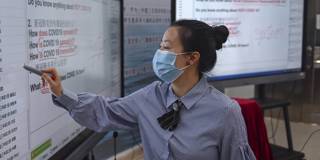While China’s government has rolled back its strict zero-COVID regime, it faces multiple short-, medium-, and long-term challenges that could impede economic growth. To restore rapid GDP expansion, Chinese policymakers must break the cycle of pessimism and recover lost household and corporate confidence.
NEW YORK – China’s recent decision to abandon its strict zero-COVID policy has led many to believe that its economy will bounce back. The Economist Intelligence Unit, for example, has revised its forecast for Chinese GDP growth in 2023 upward, to 5.2%. But growth recovery is not automatic, and China must contend with several challenges, including declining confidence among firms and households about their future incomes in the short run, insufficient productivity growth in the medium run, and an unfavorable demographic transition in the long run.

NEW YORK – China’s recent decision to abandon its strict zero-COVID policy has led many to believe that its economy will bounce back. The Economist Intelligence Unit, for example, has revised its forecast for Chinese GDP growth in 2023 upward, to 5.2%. But growth recovery is not automatic, and China must contend with several challenges, including declining confidence among firms and households about their future incomes in the short run, insufficient productivity growth in the medium run, and an unfavorable demographic transition in the long run.